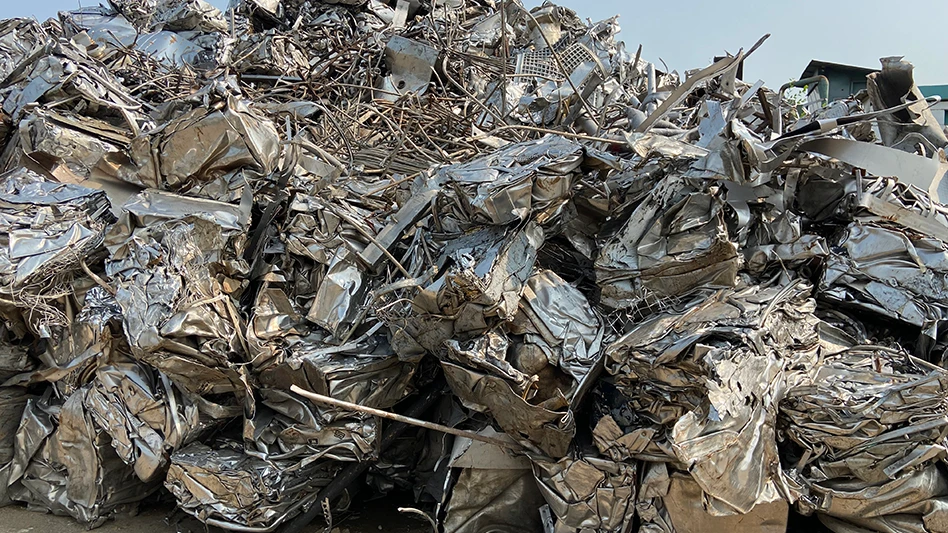
Recycling Today archives
Speaking to attendees of the Bureau of International Recycling (BIR) Stainless Steel & Special Alloys Committee at the end of May, a staff member of the London Metal Exchange (LME) says the exchange’s nickel contract has rebounded from the turmoil it experienced in 2022.
BIR 2024 World Recycling Convention guest speaker Alberto Xodo, an LME product specialist for steel and nickel, said liquidity has returned to the contract and that open interest has started rising again.
The first several months of this year have seen activity on the contract rising close to March 2022 levels. Xodo said that, following an earlier disconnect in the wake of the suspension, convergence had been restored between prices on the LME and the Shanghai Futures Exchange (SHFE).
Referring to hedging, Xodo indicated the turnaround reflected “the value companies attach to protecting themselves.” He also said measures put in place by the LME to prevent a repeat of the situation in 2022, including the introduction of 15 percent upper and lower daily price limits for all metals, had been helpful.
Xodo said the LME had put in considerable work to regain trust, including from recyclers, “and the contract seems to have come back to life.”
BIR Stainless Steel & Special Alloys Committee Chair Joost van Kleef of Netherlands-based Oryx Stainless BV agreed there were signs of “a return to normality” on the LME nickel contract.
At the same committee meeting, Yuriy Vlasov of London-based CRU said stainless steel accounted for a 15 percent share of total global steel scrap demand by revenue despite its significantly smaller volume when compared with carbon steel.
Vlasov predicted China and Indonesia would be the drivers behind a projected 3.9 percent compound annual growth rate for stainless slab production from 2023 to 2028 while output in Europe and North America would be “relatively stable.”
Stainless scrap demand would continue to come from the latter two continents, however, while China and emerging markets would rely more on other raw materials, Vlasov said.
Doug Kramer of California-based Spectrum Alloys LLC summarized regional stainless scrap market reports, noting stainless steel scrap demand from mills in Taiwan had weakened further in this year’s first quarter.
Meanwhile, mills in India were looking to rebuild their low raw material inventories and had resumed booking scrap cargoes in recent weeks, Kramer said.
Europe’s crude stainless production had been hit by strikes at more than one mill, so scrap prices there had not gained significant ground despite scarce supply and higher LME nickel values, according to BIR committee members on that continent.
Nonetheless, overall mill demand for stainless scrap in Europe was characterized as robust during the first quarter of this year, with the EU recording a year-on-year increase of more than 50 percent in net imports from beyond its borders in the first two months of this year.
Demand for superalloy scrap remains strong, according to BIR committee members, while cobalt prices have been in decline because of that metal’s oversupply.
Latest from Recycling Today
- BMW Group, Encory launch 'direct recycling’ of batteries
- Loom Carbon, RTI International partner to scale textile recycling technology
- Goodwill Industries of West Michigan, American Glass Mosaics partner to divert glass from landfill
- CARI forms federal advocacy partnership
- Monthly packaging papers shipments down in November
- STEEL Act aims to enhance trade enforcement to prevent dumping of steel in the US
- San Francisco schools introduce compostable lunch trays
- Aduro graduates from Shell GameChanger program





